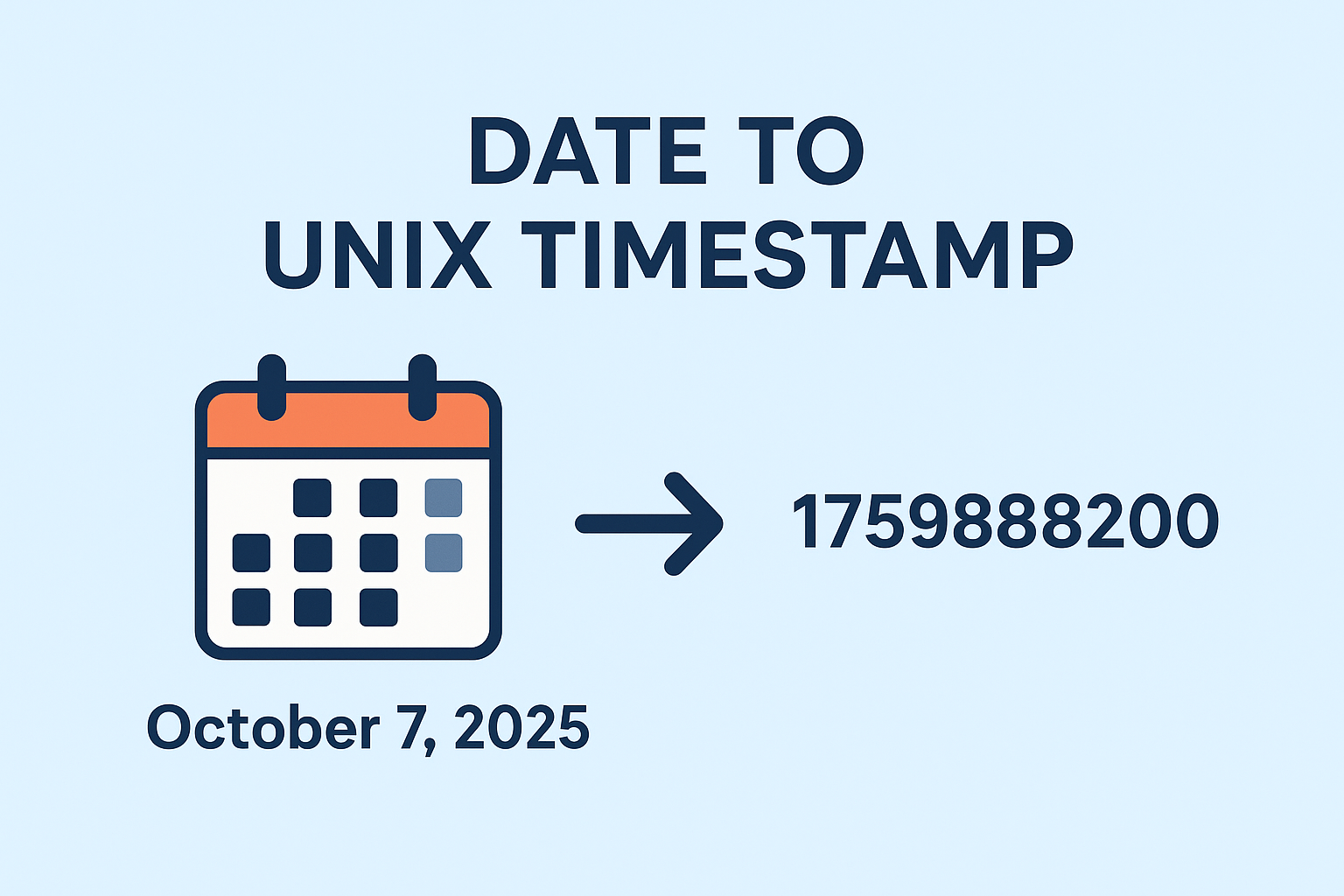
Date to Unix Timestamp
Created on 6 October, 2025 • Time Converter Tools • 11 views • 2 minutes read
Learn how to convert a date to a Unix timestamp and understand its importance in programming, databases, and web applications. Discover why Unix time is the universal standard for accurate and consistent time tracking across systems.
Date to Unix Timestamp: Understanding the Conversion ProcessTime is a fundamental part of every digital system, and representing it accurately is crucial in programming, databases, and online platforms. One of the most widely used time formats in computing is the Unix timestamp. Converting a date to a Unix timestamp allows systems to measure and store time consistently, regardless of time zones or regional formats. In this guide, we’ll explain what a Unix timestamp is, why it matters, and how the conversion process works.
What Is a Unix Timestamp?
A Unix timestamp (also known as Epoch time) represents the number of seconds that have passed since January 1, 1970, at 00:00:00 UTC. This starting point is known as the Unix Epoch. Instead of using a traditional date and time format like “October 7, 2025, 12:30 PM,” a Unix timestamp expresses time as a single number — for example, 1759888200.
This numeric value makes time calculations simple for computers. It eliminates regional differences, date formats, and time zone complications. Every second after the Unix Epoch increases this number by one, creating a consistent global standard for tracking time.
Why Convert Date to Unix Timestamp?
Converting a date to a Unix timestamp is essential for ensuring that time-based data is consistent and easily comparable across different systems and platforms. Here are some of the key benefits:
1. Universal Compatibility
Unix timestamps are recognized by almost all operating systems, programming languages, and databases. This universal standard ensures that time information remains consistent, no matter where or how it’s used.
2. Easier Time Calculations
When dates are represented as timestamps, calculations such as adding days, finding differences between two dates, or scheduling future events become much simpler. You can easily determine how many seconds have passed or will pass between two moments in time.
3. Simplified Data Storage
Databases and APIs often use Unix timestamps because they take up less space than human-readable date formats. This helps improve efficiency when storing or transmitting large amounts of time-related data.
4. Avoiding Time Zone Issues
Unix timestamps are based on UTC (Coordinated Universal Time), meaning they are not affected by local time zones. This makes them ideal for global applications, servers, and web platforms that need to handle time data across multiple regions.
How the Conversion Works
When converting a date to a Unix timestamp, the system calculates how many seconds have passed since the Unix Epoch. The process involves reading the given date and time, aligning it to the UTC time zone, and then determining the total number of seconds since January 1, 1970.
This conversion can be done using most programming languages, database functions, or online converters. Although users do not need to understand the complex mathematical operations behind it, it’s important to know that timestamps always reflect the number of seconds since the Epoch moment.
Importance in Modern Applications
From websites to mobile apps and cloud databases, almost every digital system relies on timestamps to keep track of events. They are used in:
Logging user activities and events
Managing sessions and authentication tokens
Recording transactions and database entries
Scheduling and automation systems
Because of their precision and universality, timestamps have become the backbone of time management in technology.
Conclusion
Understanding how to convert a date to a Unix timestamp is fundamental for anyone working with digital systems. It ensures consistency, simplifies time calculations, and prevents confusion caused by different formats or time zones. Whether for databases, APIs, or everyday software applications, Unix timestamps provide a reliable and efficient way to represent time worldwide.
Popular posts
-
Barcode readerMisc Tools • 23 views
-
Color pickerMisc Tools • 21 views
-
SHA-256 generatorGenerator tools • 17 views
-
Exif readerMisc Tools • 17 views
-
Ip LookupChecker Tools • 16 views